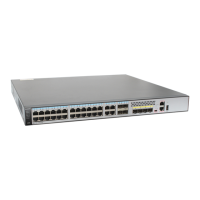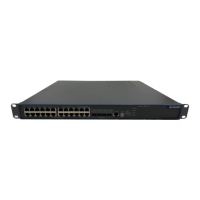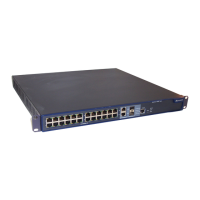l The symmetric active end sends a synchronization request packet to the symmetric passive
end with the mode field being set to 1. The value 1 indicates the symmetric active mode.
l Upon receiving the request packet, the symmetric passive end automatically works in
symmetric passive mode and sends a response packet with the mode field being set to 2.
The value 2 indicates the symmetric passive mode.
Broadcast Mode
In this mode, you need to configure both the server and the client.
After the configurations:
l The server periodically sends clock synchronization packets to the broadcast address
255.255.255.255.
l The client senses broadcast packets from the server.
l After receiving the first broadcast packet, to estimate the network delay, the client enables
a temporary server/client model for exchanging messages with the remote server.
l The client then works in broadcast client mode, and continues to sense the incoming
broadcast packets to synchronize the local clock.
Multicast Mode
In this mode, you need to configure both the server and the client.
After the configurations:
l The server periodically sends clock synchronization packets to the multicast address
224.0.1.1.
l The client senses multicast packets from the server.
l After receiving the first multicast packet, to estimate the network delay, the client enables
a temporary server/client model for exchanging messages with the remote server.
l The client works in multicast client mode, and continues to sense the incoming multicast
packets to synchronize the local clock.
4.3 Configuring Basic NTP Functions
This section describes how to configure basic NTP functions, including the NTP operating
modes.
4.3.1 Establishing the Configuration Task
Before configuring basic NTP functions, familiarize yourself with the applicable environment,
complete the pre-configuration tasks, and obtain the required data. This can help you complete
the configuration task quickly and accurately.
Applicable Environment
NTP has the following operation modes:
l Server/client mode
Quidway S5700 Series Ethernet Switches
Configuration Guide - Network Management 4 NTP Configuration
Issue 01 (2011-10-26) Huawei Proprietary and Confidential
Copyright © Huawei Technologies Co., Ltd.
213

